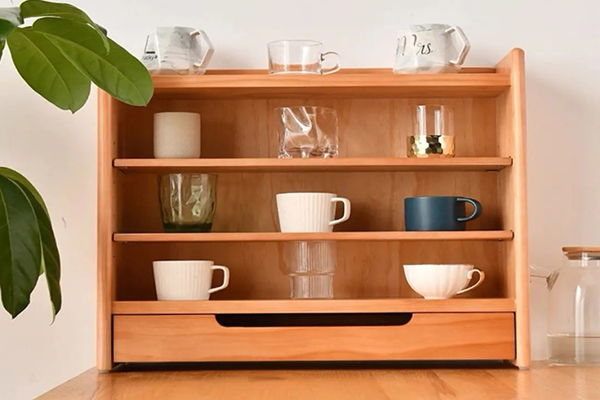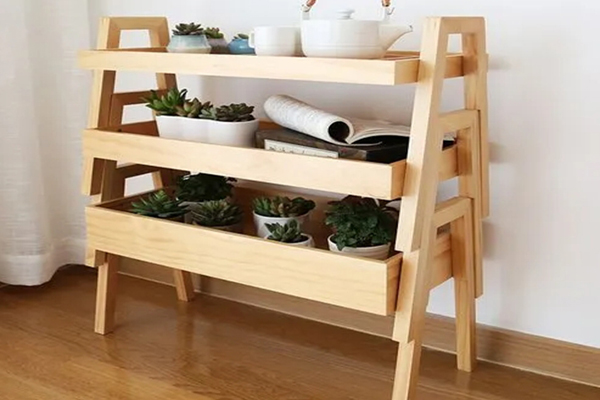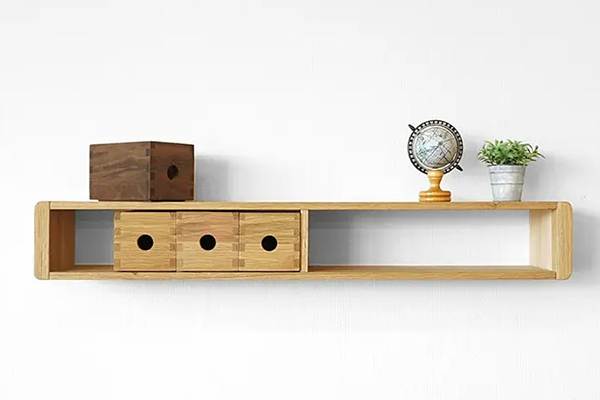In the quest for a well-organized and aesthetically pleasing home, wooden shelving units have become a staple in modern interior design. Not only do they serve the practical purpose of storage, but they also add a touch of warmth and natural elegance to any space. When we make a choice, we need to consider the following aspects
Assess Your Space
Before you start browsing through catalogs or visiting furniture stores, take a moment to assess the space where the shelving unit will be placed. Consider the dimensions of the area, the amount of natural light, and the overall decor style. This will help you determine the size, color, and style of the shelving unit that will best complement your existing interior.
Determine the Purpose
Understanding the primary function of the shelving unit is crucial. Are you looking to display books, decorative items, or perhaps store kitchenware? Different purposes may require different designs. For instance, a bookshelf might need more support and depth, while a display shelf might benefit from open, glass-fronted compartments.

Choose the Right Wood Type
Wood is a versatile material, but not all types are created equal. Consider the durability, appearance, and maintenance requirements of various wood types. Hardwoods like oak, maple, and walnut are known for their strength and resistance to scratches, making them ideal for high-traffic areas. Softwoods like pine and cedar, on the other hand, are more affordable and have a lighter, more rustic appeal.
Consider the Finish
The finish of the wood can significantly impact the look and feel of your shelving unit. Natural finishes like oil or wax allow the wood’s grain to show through, giving a more organic and authentic look. Painted or stained finishes can add a pop of color or a sleek, modern feel. Consider how the finish will interact with your home’s lighting and other decor elements.
Evaluate the Construction
A well-constructed shelving unit will not only be more durable but also safer. Look for sturdy joints, such as mortise and tenon or dovetail, which are less likely to wobble or come apart over time. Additionally, consider the weight capacity of the shelves and whether they are adjustable to accommodate various item sizes.

Think About Accessibility
Especially in spaces like living rooms or bedrooms, accessibility is key. Consider how easy it is to reach items on the shelves and whether the unit’s height and design will allow for easy cleaning and maintenance. Some shelving units come with built-in ladders or steps, which can be a thoughtful addition for high shelves.
Reflect on Sustainability
In today’s eco-conscious society, many homeowners are looking for furniture that aligns with their values. Consider whether the wood used in the shelving unit is sourced from sustainable forests and whether the manufacturer follows environmentally friendly practices.
Budget Considerations
Finally, budget is always a factor. While it might be tempting to opt for the cheapest option, remember that quality often comes at a higher price. Consider the longevity and functionality of the shelving unit in relation to its cost. Investing in a well-made, beautiful piece can be a worthwhile decision in the long run.
Conclusion
Selecting the right indoor wooden shelving unit is about more than just finding a piece of furniture that fits in your space. It’s about choosing a piece that enhances your home’s aesthetic, serves its intended purpose, and aligns with your values. By considering the factors outlined in this guide, you can make an informed decision that will bring both function and beauty to your living space.


